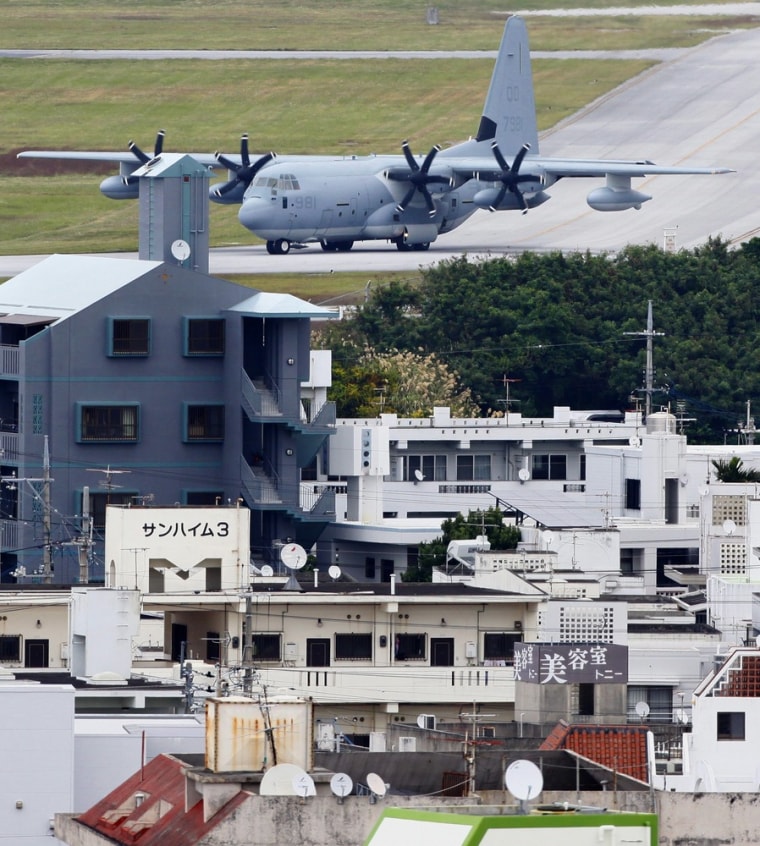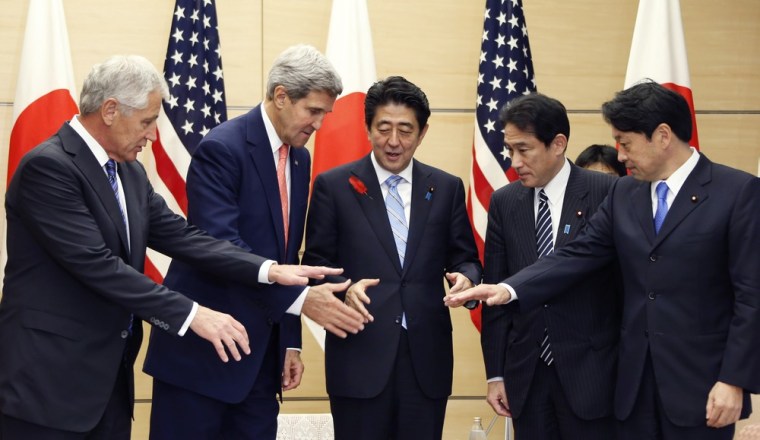TOKYO - The United States and Japan agreed on Thursday to modernize their defense alliance for the first time in 16 years to address growing concerns about North Korea's nuclear program, global terrorism, cyber intrusions and other 21st century threats.
The move follows President Barack Obama's decision to strategically rebalance U.S. forces to the Asia-Pacific region following a dozen years of war in Iraq and Afghanistan.
Washington's desire for Japan to take a greater role in its defense dovetails with the rise of nationalist Prime Minister Shinzo Abe, who has taken a more assertive approach toward such security issues as a territorial dispute with China and the threat from nearby North Korea.
"Our goal is a more balanced and effective alliance," Defense Secretary Chuck Hagel told a news conference after the first "2+2" meeting to be held in Tokyo.
He was joined by Secretary of State John Kerry, Japanese Foreign Minister Fumio Kishida and Defense Minister Itsunori Onodera.
The two countries pledged in a 10-page statement to rewrite their guidelines for security cooperation, begin rotational deployments of U.S. Global Hawk reconnaissance drones to Japan and work to address challenges in cyberspace.
The ministers agreed to locate a new X-band U.S. missile-defense radar system at Kyogamisaki air base in Kyoto prefecture in western Japan and formalized a decision to relocate 5,000 U.S. Marines from Japan's southernmost island of Okinawa to the U.S. Pacific territory of Guam.

North Korea's nuclear and ballistic missile programs have become an increasing threat for U.S. allies in the region. Pyongyang conducted a successful ballistic missile launch in December and a third nuclear test this year, but experts say it will probably need more tests before it can develop a nuclear missile.
The pariah state has also threatened a nuclear attack on the United States.
The decision to bolster anti-missile radar coverage in Japan and move Marines to Guam had been announced earlier, but the joint statement fixed the location of the new missile tracking system for the first time and specified Japan's share of the cost of the move to Guam and the Northern Mariana Islands.
Tokyo agreed to contribute up to $3.1 billion to help move the Marines to Guam from Okinawa, where their presence has often been a source of friction with the local government and population. The move is expected to cost some $8.6 billion.
U.S. Defense and State Department officials say the location of the new anti-missile radar, which is expected to be installed with a year or so, will help improve tracking coverage of rockets launched toward both Japan and the United States.
The U.S.-Japanese agreement also calls for additional efforts to realign U.S. forces in Japan and hand back land to local communities to ensure the political sustainability of the U.S. defense presence in the country.
The ministers also agreed to rewrite the guidelines for U.S.-Japanese Defense Cooperation for the first time since 1997.
The guidelines will be updated to bolster the allies' ability to respond to an armed attack on Japan, expand cooperation on areas such as counter-terrorism and promoting deeper security cooperation between the two partners, the joint agreement said.
The meeting comes as concerns are growing that Japan cannot protect itself from malicious internet hackers.
"Cyber attacks are getting more and more sophisticated, and sometimes we cannot defend against them using the systems we currently have in place," Kazunori Kimura, the Defense Ministry's director of cyber-defense planning, told Reuters TV.
Related:
